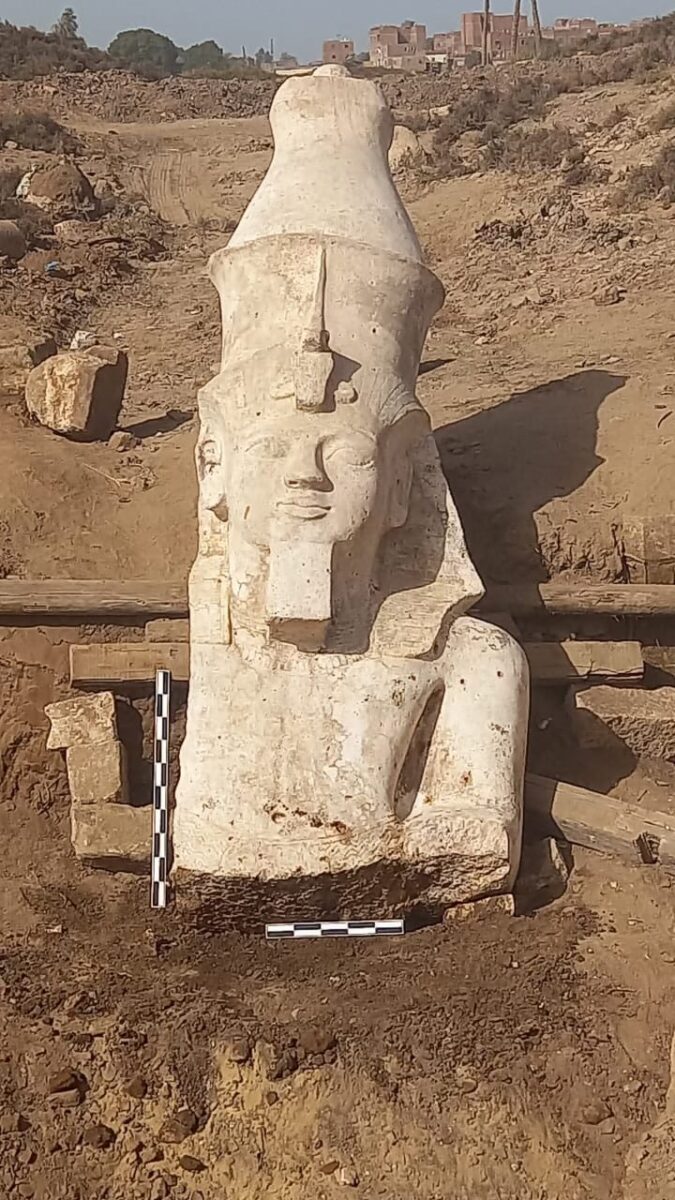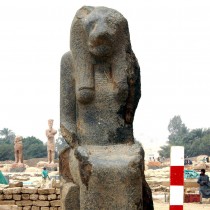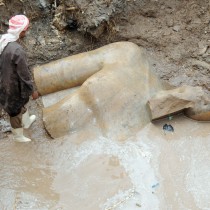The joint Egyptian-American archaeological mission of the Supreme Council of Antiquities and the University of Colorado which is led by Dr. Bassem Gehad and Dr. Yvona Trnka, has successfully uncovered the upper part of a massive statue of King Ramses II during excavations in the Ashmunein region of Minya Governorate, in Egypt.
Dr. Mustafa Waziri, Secretary General of the Supreme Council of Antiquities, emphasized the significance of this discovery. An archaeological study of the recently unearthed upper part of the statue confirmed its joint with the lower part, which had been discovered by German archaeologist G. Roeder in the ‘30s. Dr. Waziri noted that the mission has started cleaning and reinforcing the statue in preparation for its further study and visualization.
Dr. Adel Okasha, head of the Central Department of Antiquities of Central Egypt, stated that the mission commenced excavations in the region last year to uncover the religious center of Ashmunein from the New Kingdom to the Roman era. This center includes several temples, among them one dedicated to King Ramesses II. He emphasized that the discovery of this significant part of the statue indicates the importance of the site, promising further archaeological revelations in the future.
Dr. Bassem Jihad, head of the Egyptian segment of the mission, described the discovered part as being approximately 3.80 meters tall, crafted from limestone, and depicting King Ramesses II seated, adorned with a double crown and a headdress featuring a royal cobra. Hieroglyphic inscriptions on the upper back column glorify the king, suggesting that the complete statue, when assembled with its lower part, could reach a height of about 7 meters.
Dr. Yvona Trnka, who leads the American part of the mission, highlighted the successful restoration and reinstallation of huge granite columns on the northern side of the Ashmunein Basilica during the first excavation season. These columns were originally part of the Ptolemaic Temple, dedicated to the Virgin Mary during the sixth century AD.
In ancient Egypt, Ashmunein was known as Khemenu (the city of Eight – meaning the ancient Egyptian divine Ogdoad) and served as the center for the Egyptian cult of Thoth. During the Greco-Roman era, it was called Hermopolis Magna, serving as a hub for the worship of the god Hermes, the Greek manifestation of Thoth, and as the capital of the fifteenth Nome of Upper Egypt.





